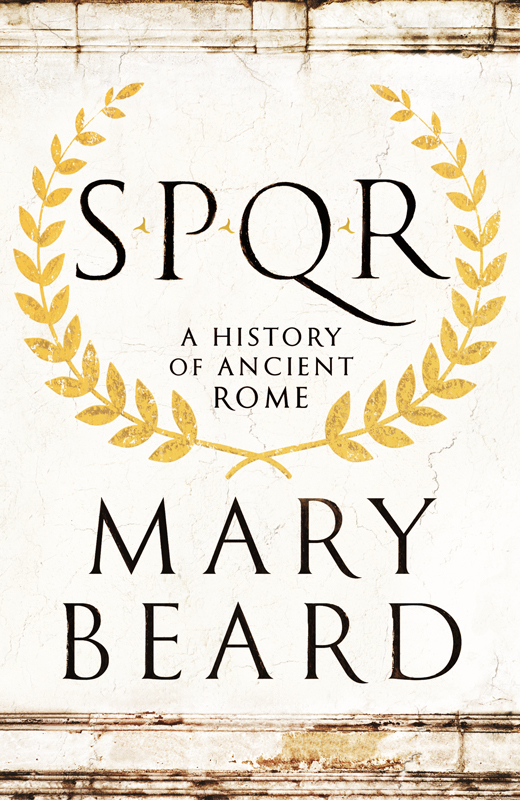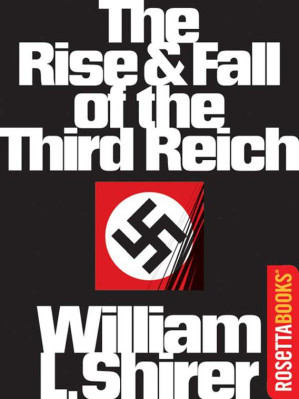Rome's success was not inevitable, and its story is more complex than simple rise and fall.
Roman history involves contingency, adaptation, and competing narratives.

Book summary
by Mary Beard
A new history of ancient Rome that challenges traditional narratives
A comprehensive history of ancient Rome from its origins
Topics
Read this book as a series of historical questions rather than a linear narrative. Use Readever to track Beard's challenges to traditional assumptions about Roman history, and note how she uses archaeological evidence to reconstruct everyday Roman life. The AI insights will help you understand her methodology of questioning historical certainties and exploring multiple perspectives on Roman identity.
Things to know before reading
Mary Beard's acclaimed history of ancient Rome covers a thousand years from the city's mythical foundation to the extension of Roman citizenship to all free inhabitants of the empire in 212 CE. Rather than presenting a straightforward narrative of conquest and decline, Beard explores how Rome grew from a small settlement to a vast empire, focusing on the political, social, and cultural dynamics that shaped Roman identity and institutions.
Beard's history challenges traditional narratives of Roman history by focusing on questions rather than certainties, exploring how Romans constructed their identity and institutions, and examining the complex relationship between myth, memory, and historical reality.
Roman history involves contingency, adaptation, and competing narratives.
Roman identity was constructed through storytelling and historical memory.
Roman identity involved both inclusion and exclusion in complex ways.
Ready to continue? Launch the Readever reader and keep turning pages without paying a cent.

William L. Shirer
A monumental study of Hitler's empire and Nazi Germany

Howard Zinn
Tells American history from the perspective of ordinary people

Yuval Noah Harari
A brief history of humankind exploring our species' evolution
This summary reveals Beard's innovative approach to Roman history that questions traditional assumptions and explores how Romans themselves understood their world. You'll discover why this book has been praised for making ancient history accessible and relevant while maintaining scholarly rigor.
Key idea 1
Roman history involves contingency, adaptation, and competing narratives.
Beard argues against viewing Roman history as a predetermined story of rise and inevitable decline. Instead, she emphasizes the contingent nature of historical events, the adaptability of Roman institutions, and the multiple competing narratives that Romans themselves constructed about their past. This approach reveals a more complex and interesting history than traditional triumphalist or declinist accounts.
Remember
Key idea 2
Roman identity was constructed through storytelling and historical memory.
Beard explores how Romans created their identity through stories about their past—from the foundation myths of Romulus and Remus to the histories written during the Republic and Empire. These narratives weren't just records of events but active constructions that shaped Roman values, institutions, and self-understanding across centuries.
Remember
Key idea 3
Roman identity involved both inclusion and exclusion in complex ways.
The Roman Empire's success depended on its ability to incorporate diverse peoples, cultures, and traditions while maintaining a core Roman identity. Beard examines the tensions between inclusion and exclusion, assimilation and differentiation, that characterized Roman expansion and administration, showing how these dynamics shaped both Roman power and its limitations.
Remember
SPQR: A History of Ancient Rome covers Roman history from the city's mythical foundation around 753 BCE to the extension of Roman citizenship to all free inhabitants of the empire in 212 CE. The title SPQR stands for "Senatus Populusque Romanus" (The Senate and People of Rome), the official designation of the Roman state that appears on monuments and documents throughout Roman history.
Rather than presenting a conventional chronological narrative, Beard organizes her history around key themes and questions: How did Rome grow from a small settlement to a vast empire? How did Romans understand their own history and identity? What made Roman institutions and culture so resilient and adaptable? How should we understand the relationship between myth, memory, and historical reality in Roman self-understanding?
Open Readever's reader to highlight passages, ask the AI companion questions, and keep exploring without paying a cent.
Beard's work has been praised for its accessibility, scholarly rigor, and innovative approach to Roman history. Her ability to make complex historical issues understandable to general readers while challenging traditional assumptions has made the book both a critical and popular success. Reviewers have particularly noted her skill in bringing ancient Romans to life as real people with complex motivations and worldviews.
Readers interested in ancient history and classical civilization
Those seeking a fresh perspective on Roman history
People who enjoy history that questions traditional assumptions
Anyone interested in how societies construct identity and historical memory
Mary Beard is a British classicist and professor at the University of Cambridge. Born in 1955, she is known for her work on Roman history and her ability to make classical studies accessible to general audiences. She has written numerous books on Roman history and culture and has presented television documentaries on ancient Rome and other historical topics.
Build your personalized reading stack
Download full-length ePubs in one click with personal cloud storage.
Blend AI-guided insights with tactile note-taking to accelerate reflection.
Follow curated reading journeys tailored to your goals and time budget.
Sync highlights across devices so lessons stick beyond the page.
Sign in to Readever to keep reading with AI guidance, instant summaries, and synced notes.
SPQR offers a fresh perspective on ancient Roman history that challenges traditional narratives of inevitable rise and decline. Beard's innovative approach explores how Romans constructed their identity through storytelling and historical memory, how their institutions adapted to changing circumstances, and how their ability to incorporate difference while maintaining a sense of Romanness enabled their remarkable longevity and influence.
This extended outline captures Beard's innovative approach to Roman history that challenges traditional narratives and explores how Romans constructed their identity through storytelling and historical memory. Use it to discover a fresh perspective on ancient Rome that emphasizes contingency, adaptation, and the complex relationship between myth, memory, and historical reality.
The book's value lies in its ability to make ancient history accessible and relevant while maintaining scholarly rigor, showing how questions about identity, institutional adaptation, and the construction of historical narratives remain vital for understanding both the ancient world and our own.
Start reading SPQR for free and unlock personalized book journeys with Readever.